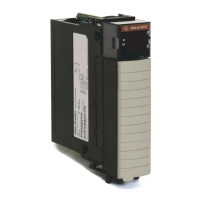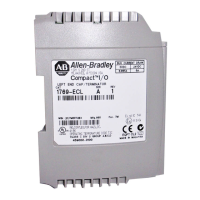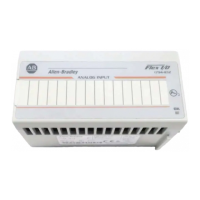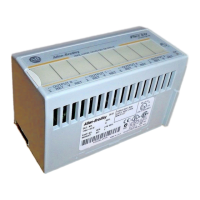Rockwell Automation Publication 1756-UM540E-EN-P - December 2017 23
Analog I/O Module Features Chapter 2
Synchronized Sampling lets you configure a test stand, for example, and take
many measurements simultaneously across many modules, if needed, while still
precisely coordinating the sampling. With these modules, the synchronized
sampling should coordinate within approximately ± 20 µs.
Rolling Timestamp of Data
The rolling timestamp is a continuously running 16-bit rolling timestamp that
counts in milliseconds from 0…32,767 ms; where 1 ms = 1 count.
Rolling Timestamp with Input Modules
The 1756-IF8I, 1756-IRT8I, 1756-IR12, and 1756-IT16 modules scan their
inputs at the RPI, update the input data, and update the rolling timestamp value.
Other ControlLogix analog input modules scan their inputs at the RTS, not the
RPI.
In either case, though, program the controller to use the last two rolling
timestamp values to calculate the interval between the receipt of data or the time
at which new data is received.
The rolling value is commonly used with instructions such as the PID and PIDE
instructions. Every time a rolling timestamp changes, a PID or PIDE instruction
is executed. When you configure a PID instruction for use with an input module,
set the loop update time equal to the module’s RPI value.
Rolling Timestamp with Output Modules
For the 1756-OF8I module, the rolling timestamp value is updated only when
new values are applied to the Digital to Analog Converter (DAC).
Floating Point Data Format
The modules return channel data to the owner-controller in the IEEE 32-bit
floating point data format. In your Logix Designer application, the data type is
REAL. You can configure the module to scan its channels and return data as
quickly as every 1 ms.
The floating point data format lets you change the data representation of the
selected channel. Although the full range of the module does not change, you can
scale your module to represent I/O data in specific terms for your application.
To scale a channel, select two points that represent signal units, that is, a Low
Signal and a High Signal. You also select two points that represent engineering
units, that is, Low Engineering and High Engineering.

